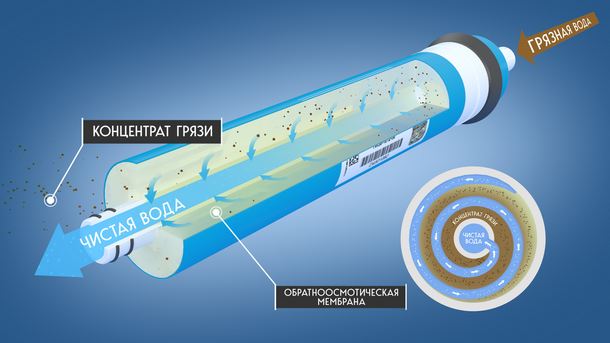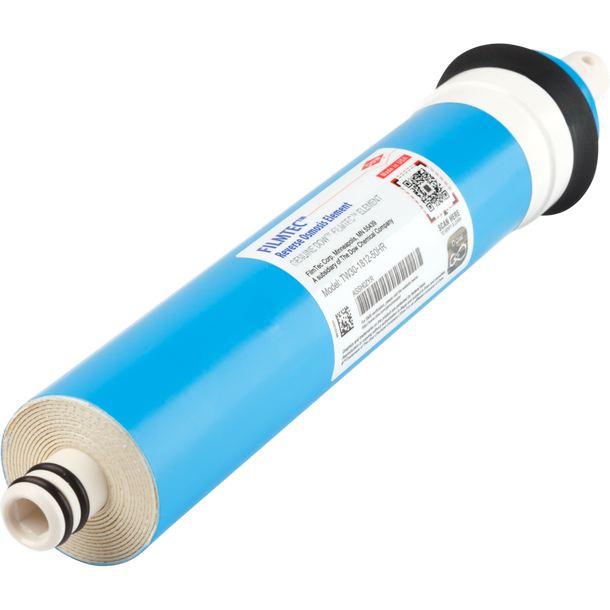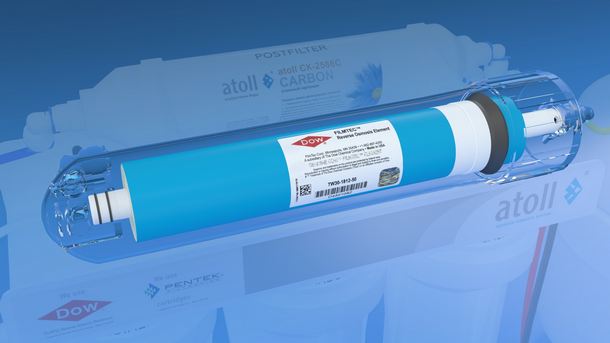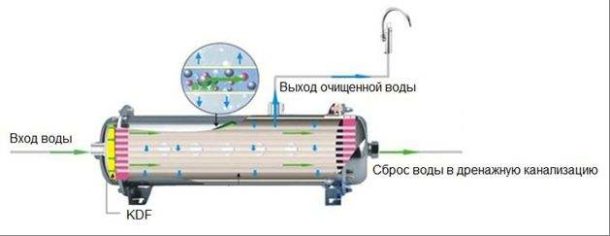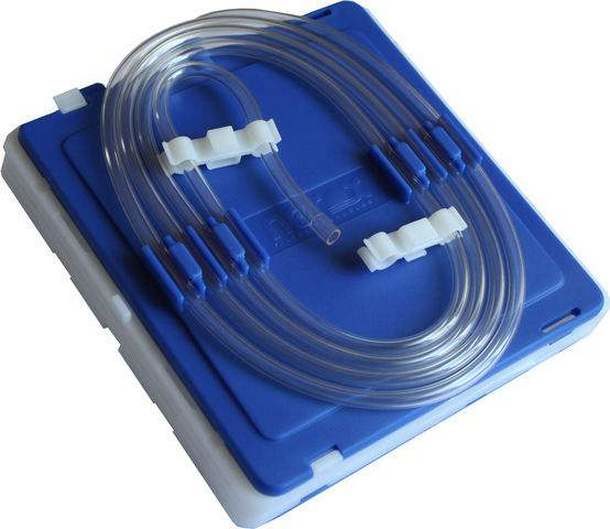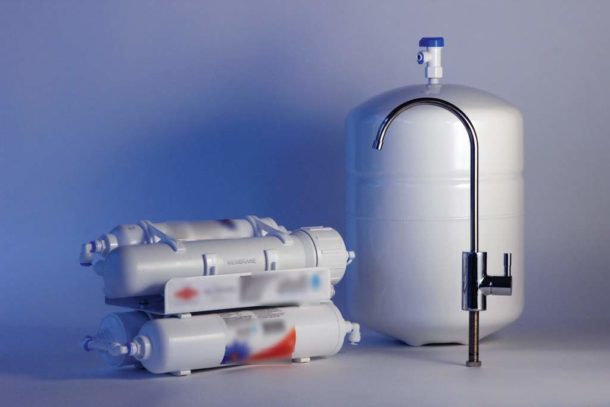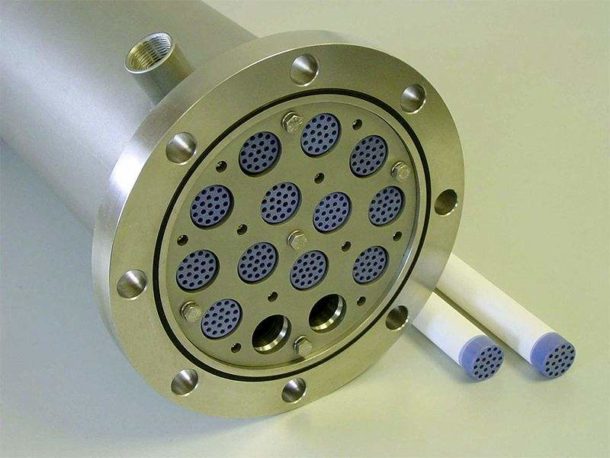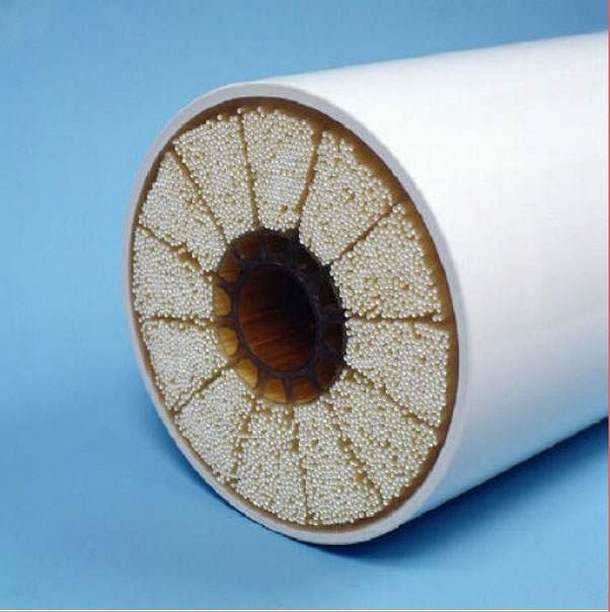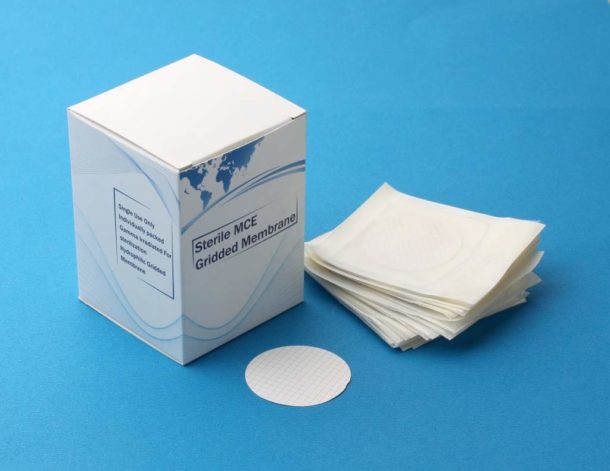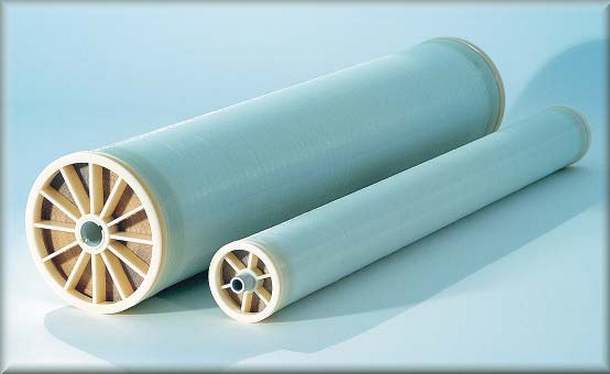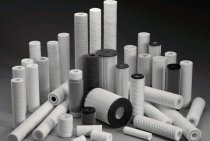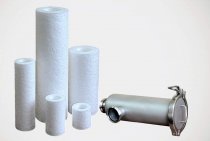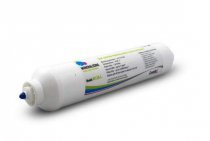Tasteless tap water is the scourge of residents of big cities. Even after boiling, it leaves an unpleasant aftertaste in the mouth. In addition, some experts argue that even boiling cannot cleanse it of harmful impurities and microbes. If you live in an apartment and suffer from bad water, then a membrane filter for water purification will help you.
What is a membrane filter?
All filters perform the function of detaining harmful impurities. As a result, we get delicious water that can be boiled or drunk immediately. The membrane system, operating on the principle of reverse osmosis, does not allow any harmful substances to pass through, does not accumulate them in itself, and, thanks to its design, washes into the drainage. It has pores through which only water and oxygen can pass. There are several types of materials for the production of such a filter: lavsan, polyurethane and others.
The first such systems were invented back in the 19th century, but the prototype of the modern membrane was released only in the 1960s. It is believed that these are the best water purification systems in existence. They trap not only large debris, but also small particles, purifying water at the molecular level.
All major Russian and foreign companies manufacturing water filters have membrane structures in their assortment. First of all, they are in demand among residents of apartments in big cities.
Externally, the device is a plastic cylindrical box, inside which there is a membrane and one or more pre-filters. It is connected to cold water and is displayed on the sink with a separate tap. Each filter has its own service life, as over time it gets dirty and cannot perform its functions.
The principle of operation of a reverse osmosis membrane
The reverse osmosis membrane sheet is made from special materials that can only pass water molecules and oxygen, all other substances do not accumulate, and merge into the drainage with a stream of water.
The filter itself has one inlet for water from the water supply and two outlets. The fact is that the water is divided into two streams: one comes out purified, and the second washes away impurities from the membrane and carries them into the sewer.
There are membrane filters that work differently. They are placed in a container with water, it passes through the membrane and, according to the principle of communicating vessels, comes out purified. The use of such a filter is justified in field conditions, when there is no running water nearby.
In the field filter, it is necessary to clean the membrane cartridges from time to time. You can wash them with clean water or use special chemicals. They are selected depending on the type of pollution. Acid removes salts well, and alkaline removes organic and biological compounds.
Varieties by type of membrane
There are several types of membrane filter systems. They differ in structure and pore size. Filters with small holes are considered the best, as they purify water well.
Membrane types:
- Microfiltration. Provides rough water purification, used at the preparatory stage. Such a filter will cope with turbid wastewater, but in the future it will require finer purification.
- Ultrafiltration. This type of membrane can purify water from macromolecular compounds, bacteria. It is usually used in industrial enterprises, as it does not remove salt from the water.
- Nanofiltration. Good for hard domestic water. In addition to bacteria, it removes impurities of chlorine and heavy metals from water.
- Reverse osmosis membrane. Such a system has the smallest openings and retains all substances harmful to humans and contaminants.Salts, bacteria, viruses, oil products are neutralized by 98%. With the help of such filters, it is possible to purify and desalinate sea water; they are used in the production of bottled water, in pharmacology and microbiology.
Types by type of construction
By type of design, filters are divided into:
- Tubular. The cleaning element is a porous tube. They can be made of cermet, plastic, ceramics. The diameter of the pipe can reach up to several centimeters. There are symmetrical and asymmetric membranes. In the former, the pores are evenly spaced; in the latter, one wall has a greater concentration of holes than the other. Water is supplied under pressure to this pipe, and the output is a pure liquid, and in a separate container - a concentrate of harmful substances.
- Roll. This filter is a membrane wound like a roll onto the main pipe. Through a special hole, water enters it and flows in a spiral, being cleansed in parallel. Clean water flows down the main pipe, and harmful substances exit from another hole. Such systems are cheap to manufacture, but quickly become contaminated during operation.
- Hollow fiber. They consist of membrane tubes that are placed in a filtration apparatus. This significantly increases the working surface, but such filters quickly clog and are difficult to clean.
- Disk. They are for laboratory use only and are not used to purify drinking water in the home. The filter element is made in the form of a flat disk. The principle of operation of this design is that water is poured into a reservoir in which a piston with a membrane moves. It can be compared to a household French press. Only the filter has several pistons to increase the amount of filtered water. Clean water goes to the tap to the consumer, and harmful substances settle in a special tank.
Types of disc membranes:
- Ordinary - consist of one substance.
- Reinforced - consist of a fabric substrate with a porous material on top.
- Substrate - consist of a large-porous material (for example, polysulfone) and a working layer (polystyrene).
Do not worry that all layers of the disc are of chemical origin, the use of such a filter is absolutely safe for health.
Pros and cons
Compared to other types of filter systems, the membrane design has the following advantages:
- Ease of operation and maintenance.
- Good degree of cleaning.
- Small sizes.
- The presence of hiking varieties.
Many families have appreciated the benefits of a membrane filter. It allows you to take care of the health of loved ones without unnecessary hassle. Parents who think about the future of their children most often choose membrane systems for water treatment.
But this design also has disadvantages:
- High price.
- May retain nutrients.
- Weak water flow from the filter.
A membrane water filter is an excellent choice for residents of megacities who are dissatisfied with the quality of tap water. Some families order the delivery of clean water from special companies, but tap water can also be drunk if it is purified first. The membrane construction is considered one of the best today.
